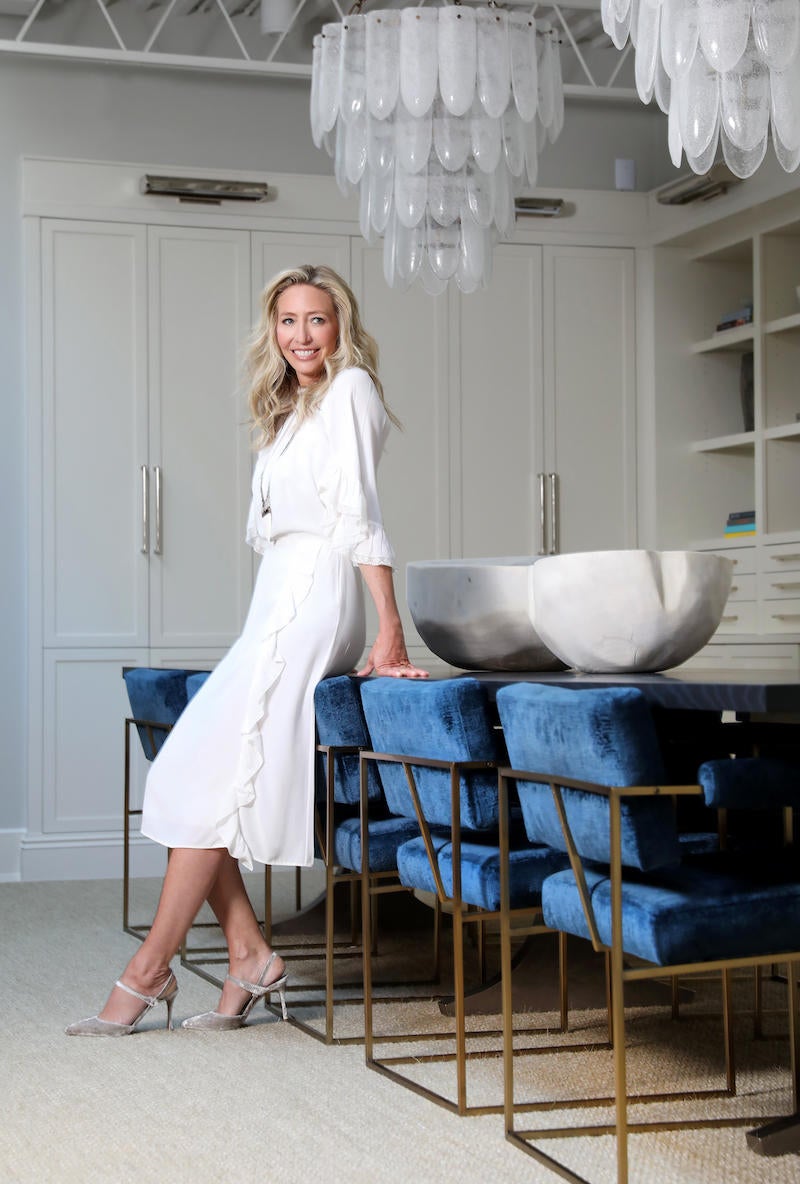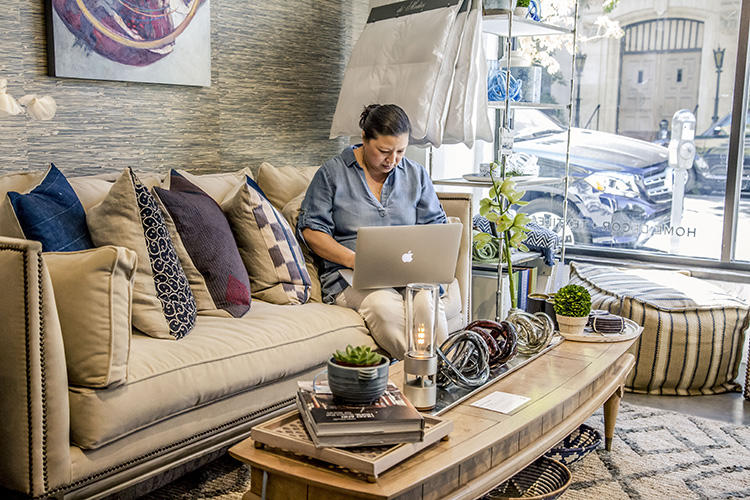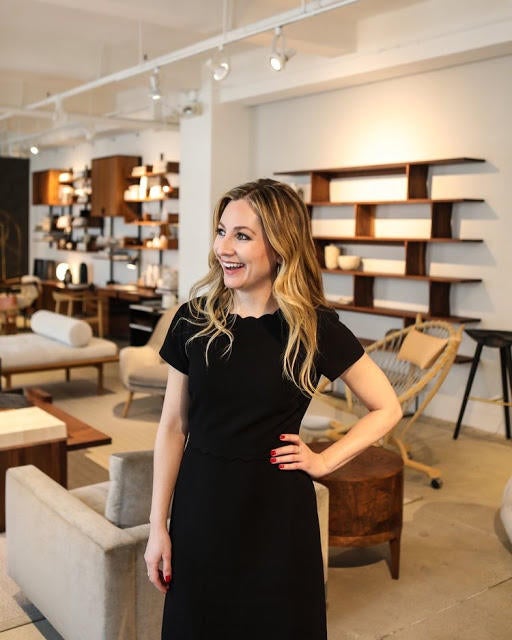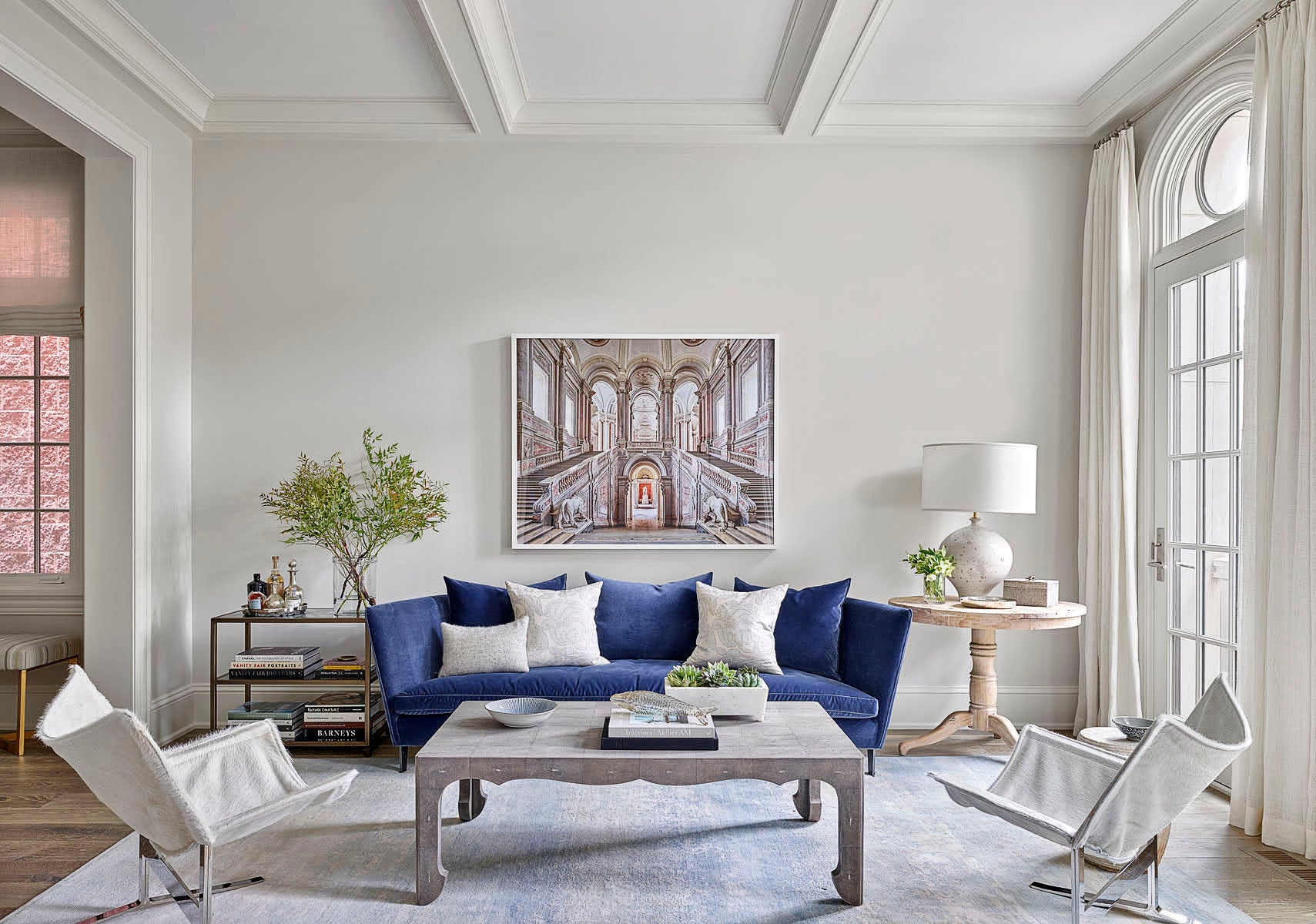For all those designers six weeks deep into a brutal lockdown, with projects on pause and kids pretending to homeschool in the background, we bring good news. Despite a global pandemic and a bungee-jumping stock market, yes, designers are still signing new clients.
We know, because we talked to them. In an effort to find out how to hook a new project in the midst of a pandemic, Business of Home spoke with five designers who have landed new business in the month and a half since the crisis took hold. Each situation was a little different, but one thing was universal: the feeling of relief. “Right after the call, I put the phone down and had a glass of wine,” says Chicago-based designer Andrea Goldman. “It was like: Oh, my god, there’s work out there!”

THE RIGHT TIME
Goldman’s firm is set up to take on large-scale ground-up projects, so it was a bit disconcerting that the first wave of calls to come in after Chicago went on lockdown was for small stuff only. “People are sitting in their houses all day, getting sick of their rugs and sofas—we’ve had a flurry of calls [from people asking], ‘Can you just do one room?’” she says. Goldman was tempted. “I started to panic a little, and I was telling my team: ‘We’re looking at things we normally wouldn’t take on, but if it keeps the lights on, then that’s what we’re going to do.’”
However, new clients—a young couple—with a more substantial project called soon after. Goldman landed the job with an initial consultation via Zoom and then a site visit she did on her own, FaceTiming with the clients in a mask. One of the main factors pushing the couple to move ahead despite the madness? Timing. “They have a younger family, they’re living in a house they want to get on the market, and they know construction is going to take time,” she says. “Every month matters. They’d like to be set up before the next school year, and they’re racing against the clock.”
TIME TO TINKER
In mid-March, as shelter-in-place orders began to pop up across the country, you began to hear everyone in the home industry offer up a variation of the following tentatively hopeful sentiment: “This will actually be good for design, because people will be cooped up in their houses and want to change things up ... right?” Six weeks in, for many designers, the speculation has proven true. People are cooped up in their houses—and they are craving change.
“I talk to my clients more than ever before,” says Andrew Kotchen, a principal of New York–based firm Workshop/APD. “They’re sitting around at home thinking of all things they’d like to do—I call it quarantinkering.” Kotchen’s firm has been getting a few calls a week from potential new clients over the past month, most of which weren’t quite a fit. However, a couple with a house in Westchester was, and Workshop/APD is now moving ahead on a full renovation. (While Kotchen spoke on the phone with BOH, a team of his designers was at the property, surveying with face masks, keeping 6 feet apart.)
There was no deadline pressure on the job, but the downtime had given the clients the bandwidth to turn their attention to a project they’d long been putting off. “A lot of these people have busy lives and they’re normally really difficult to pin down,” says Kotchen. “[Stay-at-home orders] have given them the time to focus on things they wouldn’t otherwise.”
Goldman concurs. Another new project she’s courting: a renovation for married empty nesters. “They certainly don’t have to start right now, they’re just sick of their house,” she says. “It’s, ‘Now I’ve got my husband’s attention, and he’s had to look at our closet and basement for six weeks!’ They’ve had time to talk and want to strike while the iron’s hot.”
DEAL HUNTERS
Designers have always had to contend with tire-kicking clients who want House Beautiful results on an HGTV budget. A global health crisis and looming recession has only made it worse: Right or wrong, potential clients think designers are desperate and are looking for bargains. “For the most part, people have been really respectful about pricing, but someone did call up and ask if we could change our model to mimic Modsy,” says Shelly Lynch-Sparks of New York–based firm Hyphen & Co. “They charge a flat fee [as low as $79] per room. We said no, absolutely not.”
However, in other ways, her firm is willing to meet clients where they are. “Someone might call and say, ‘Here’s my budget, can you work with that?’ And yes, absolutely, that makes total sense.”
Indeed, for every low-balling speculator, there’s a reasonable client simply looking to make a deal. Goldman says that while clients haven’t balked at her pricing, there has been pressure on contractors to get a better deal from their subcontractors. Kotchen is experiencing the same phenomenon from the other side of the table: On a renovation he’s undertaking on his own vacation home in Florida, he’s hoping to get better deals on material and better value from subs.
On Workshop/APD’s projects, Kotchen has noticed an uptick in haggling. He says clients negotiating can be reasonable—and is par for the course, pandemic or no—but designers should be aware of the danger of bending too far.
“The unfortunate side of fee adjustments is that projects can take two or three years, and you’re making decisions today that have a long effect into the future,” he says. “People try to negotiate on the front end of the project, and then you’re stuck going broke on the back end because of what you agreed to.”

LOCATION, LOCATION, LOCATION
Los Angeles–based designer Jeanne Chung has landed three clients since the pandemic broke and California went on high alert. Taking on new work has involved a host of complications, ranging from masked site visits to extensive legwork on the back end for proposals. “We spent hours getting updates on every single vendor—is the factory open? When do they expect to open? How long is their lead time?” she says. “The [clients] want to have a solid design plan in place so that once we emerge from this fog, it’s full steam ahead. While they are on lockdown, they don’t want to waste any time.”
Although Chung’s current projects—a law office, an outdoor space and a vacation home—haven’t been radically different from the work she might be getting normally, she has noticed a theme. “Not one of these is used as a primary living space, so in the event that there are delays with product, it isn’t the end of the world,” she says. “[The clients] know that we are in an unusual situation so things are a bit different. … As long as we continue to keep them updated, I think everyone will be happy.”
Kotchen thinks that his new clients’ suburban location may have played a role in his getting the job. In the months ahead, he says, city dwellers are going to be reconsidering densely packed urban living, and early reports indicate that we’re likely to see an exodus to the sticks. As a result, in the years ahead there may be an opportunity for designers who specialize in single-family residences.

NEW PRIORITIES
So what kind of work are COVID-era clients looking to do? It depends. Unsurprisingly, many are looking for a quick fix to liven up quarantine quarters. Requests for color consults, advice on a new rug, or home office spruce-ups are common. Small-scale work on a tight timeline is probably the most frequent design inquiry—especially as many states tentatively reopen their economies. “Our residential clients are asking if we can wrap projects up quickly,” says Lynch-Sparks. “They know this is temporary and they’ll have to get back to work soon.”
However, other new clients are making a deeper reassessment of their homes, now that they’ve had six weeks to get intimately acquainted. As they look ahead to a near-term future with less access to publicly shared spaces like gyms and even offices, they’re making changes. “One client now wants higher ceilings in his basement to have a better workout room,” says Goldman. “We’re also finding that dining rooms aren’t [as important as] they used to be now that people are using them as home offices. You’re going to see less and less of those going forward. … People don’t want to give up the real estate for spaces they’re not using.”
NEWCOMERS
As we’ve covered extensively, stringent lockdown measures mean that in most cities, all design is e-design right now. As a result, many of the clients that designers have landed over the past six weeks are for “virtual” projects, conducted entirely online. E-design has plenty of challenges, but for many, it’s a chance to work with far-flung clients who might never have hired a designer before.
New York–based designer Meagan Camp saw many of her Manhattan projects frozen by the city’s no-nonsense shutdown of nonessential business—and many apartment buildings’ refusal to grant entry to non-residents. A few weeks into the lockdown, she started offering e-design consultations via Zoom for $150 per hour as a low-impact way to keep income flowing to her firm. Camp’s 28,000 Instagram followers took note, and she has been holding regular sessions.
“I enjoy getting to work with people all over the country,” she says. “One recent client is in North Carolina and they have the cutest little house. … I basically said, ‘Flip your living room with your dining room’—she did and loved it.”
Camp says most of her virtual clients have never worked with a designer before. For some, it’s a budget consideration. For others, they’d simply never thought of it—and some might turn into full-time clients. “There are people with significant means and income who could hire someone, they just haven’t. … Now they’re thinking of it because they’re stuck at home,” she says.
So is there a common thread in what these newly isolated clients want? “A lot of it is people who don’t feel good in their spaces—they’re feeling claustrophobic; they’re not happy,” says Camp. “It’s a lot of emotions.”
Homepage photo: Design by Andrea Goldman | Courtesy of Andrea Goldman Design




























